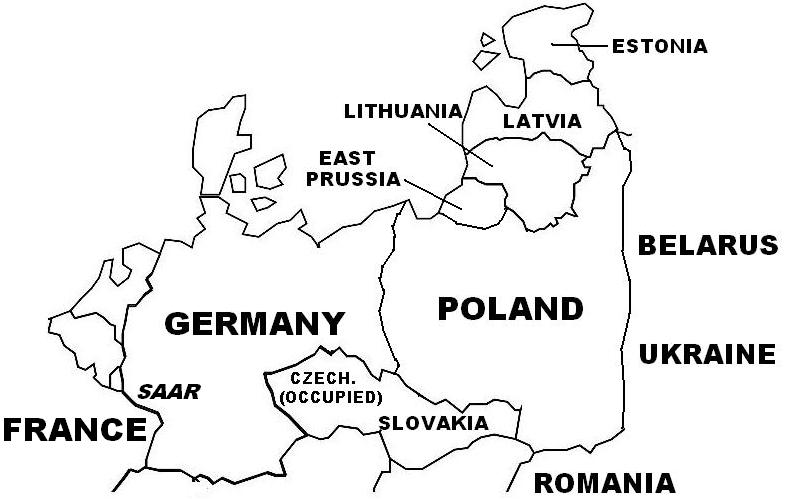On September 28, 1939, as their joint invasion of Poland was winding down, Germany and the Soviet Union, acting on Stalin’s proposal, agreed to make changes to their respective spheres of influence as set forth in the Molotov-Ribbentrop pact. In the revised treaty, Germany relinquished to the Soviet Union its claim to a sphere of influence on Lithuania in exchange for the Soviet Union relinquishing to Germany its sphere of influence to sections of central Poland, including Warsaw and Lublin. On October 8, 1939, Germany annexed western Poland, including Danzig, the Polish Corridor, and Silesia, and established the German-run General Governorate in the rest of the German-assigned territory in Poland.

The Soviet Union also annexed its share of Polish territories, partitioning them among its subordinate states Belarus, Ukraine and Lithuania, and implementing Sovietization policies in ethnic Polish-majority regions.
In German-controlled Poland, which was extended to include all of Poland after German forces captured the Soviet section of Poland in the early stages of Operation Barbarossa (the German invasion of the Soviet Union) in June 1941, Nazi Germany implemented policies aimed at achieving Lebensraum, where ethnic Germans would settle in the former Polish territories which then would be completely Germanized politically, economically, socially, and culturally. As Lebensraum entailed displacing the native populations, Generalplan Ost (General Plan East) was initiated in a series of programs of depopulating, resettling, or otherwise eliminating the Polish population from lands that were destined to become fully German. Central to Nazi doctrine was the concept of German racial superiority, and that German ethnic purity was to be maintained and not tainted by the blood of races which the Nazis classified as inferior (Untermensch, or sub-human), which included Poles and other Slavic peoples, Jews, and Roma (gypsies), among others.
The colonization and full Germanization of Polish territories were to be accomplished in stages over many years. But of more urgency to the Germans was the fate of Polish Jews, whose eradication was determined in January 1942 through the euphemistically called “Final Solution”. In the aftermath of the Polish campaign, German authorities segregated the three million Polish Jews, who were then forced into the hundreds of Jewish ghettos quickly set up across Poland. In the ensuing period, Polish and other Jews across Europe were transported by train to specially constructed labor, concentration, and extermination camps where the mass executions ultimately were carried out. Aside from Jews, Slavs, and Roma, Nazi extermination policies also targeted the physically and mentally disabled, homosexuals, political opponents, communists, prisoners of war, resistance fighters, and other groups.
In Poland, as a result of the German occupation, some six million Poles perished, or 20% of the total population. Of this number, three million were Jews, of whom 90% were killed. (Taken from Wars of the 20th Century – World War II in Europe)
